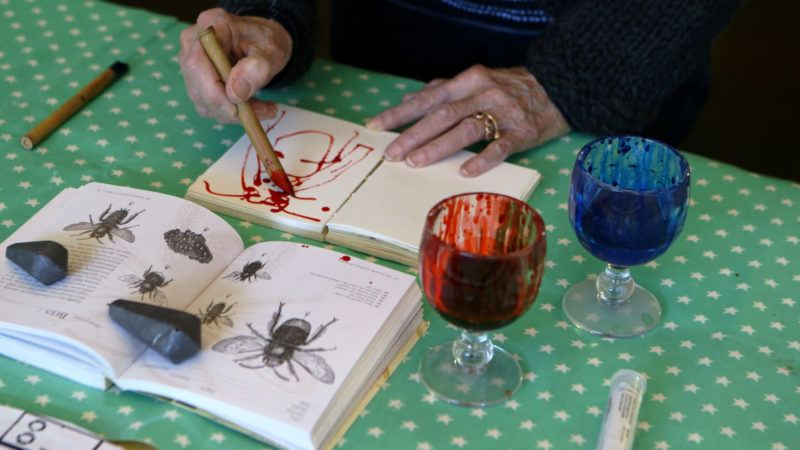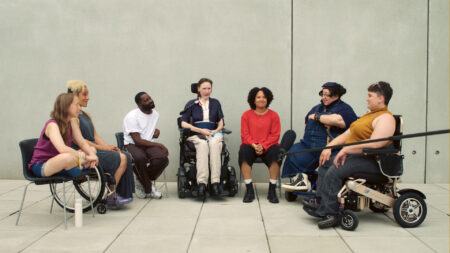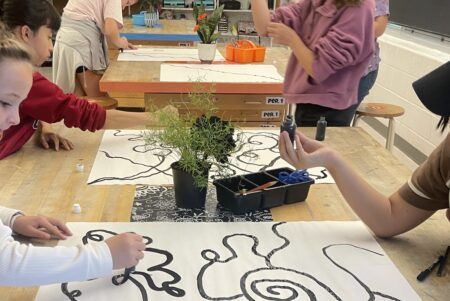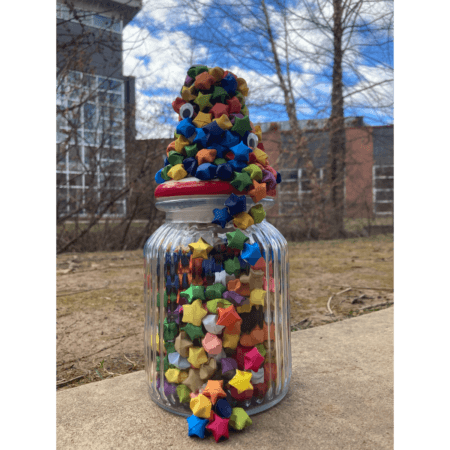Teaching with Contemporary Art
“Yes, and…”: How Artists Are Using Improvisation and Spontaneity in Their Work

Production still from the Art21 “Extended Play” film, “Sarah Sze: Improvisation.” © Art21, Inc. 2012.
Most of us go through life feeling like we’re not in control; this often makes us reliant on and even addicted to forms of structure and order, for comfort. As an artist and educator, I often find it hard to notice when I default to an insistence on control. In turn, I constructed a video playlist to inspire letting go and incorporating spontaneity into one’s art practice, teaching practice, or life.
Improvisation takes all kinds of forms, from process to product to performance. In the Art21 video titled Improvisation, Sarah Sze describes spontaneity as the interesting part of the process. She says, “You can spend a lot of time conceptualizing and thinking it over, and then it’s usually in the actual making and the process where there is something spontaneous. After all that planning, you had no idea what was going to happen—and when that happens is when it’s interesting.” The artists in this playlist draw on concepts from improvisation in various ways: Oliver Herring incorporates the unexpected and playful into what he calls “TASK parties“; Abraham Cruzvillegas activates the idea of autoconstrucción into self-portraits; many artists transform ideas into performance; and Marcel Dzama and the collaborators Nathalie Djurberg & Hans Berg describe how improvisation is part of the evolution of their intuitive processes into final works of art.
In my teaching practice, the ideas of improvisation and spontaneity sparked many routes for classroom provocation. When introducing an artist’s concept video to my class, I first lead brainstorming sessions with the students, with guiding questions, names of artists who relate to the guiding questions, and a few challenges or constraints that could help students explore the theme using multiple modalities. Just as the artists in this playlist consider improvisation in their processes, I use these big questions to guide our classroom inquiry: How can we celebrate the unexpected moments in our lives and our art-making process? When do spontaneous moments in our creative process take place? What media or modes of making tend to lead to improvisation and spontaneity? And when might spontaneity serve us well?

Production still from the Art21 “Extended Play” film, “Joan Jonas: Drawings.” © Art21, Inc. 2014.
Throughout our classroom study, I create a few constraints and challenges for my students. For example, I might have a “no-plan day.” During this challenge, students follow one idea from start to finish; they can let it change and evolve but cannot start over and cannot erase anything. Or, I might ask students to choose one stage of their creative process during which to intentionally introduce spontaneity. This could be initiated in the brainstorming phase; they might use tools such as handmade dice or a spinner to dictate which action should be taken next, or they might introduce rules or other artists into the production process. Spontaneity can even be introduced in a critique session, by having other students curate and talk about someone else’s work. In order to help students get into a spontaneous mindset, I might start a class with quick improvisation exercises, such as:
- Alien Greeting: In this fun exercise, each student introduces a silly sound and movement that is their alien greeting.
- Gift Exchange: Pair students together, have students give each other imaginary presents, and respond with enthusiasm each time!
Most importantly: Ask your students what they want to explore! Take time to notice where spontaneity and improvisation come into the practices of these artists in the playlist, so they can inspire teachers and students to loosen the reigns of control, allowing for unexpected moments of magic in everyone’s art making.
Watch Erica’s playlist, “Teaching with Improvisation and Spontaneity.”



